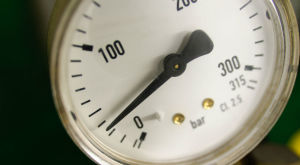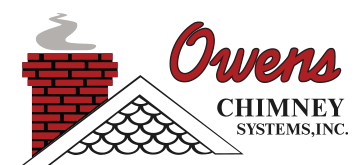 Think of your house and chimney system as a living, breathing thing. They actually need to breathe to exchange the stale, stagnant air for fresh air. There’s a multitude of appliances pushing air out of your house—bathroom fans, central vacuums, range hoods, clothes dryers, etc.—leaving it searching for ways to bring new air back in to replace it. This creates negative pressure in your house (meaning your house becomes more interested in trying to suck air in than push air out). This most definitely interferes with the air supply for your entire chimney system.
Think of your house and chimney system as a living, breathing thing. They actually need to breathe to exchange the stale, stagnant air for fresh air. There’s a multitude of appliances pushing air out of your house—bathroom fans, central vacuums, range hoods, clothes dryers, etc.—leaving it searching for ways to bring new air back in to replace it. This creates negative pressure in your house (meaning your house becomes more interested in trying to suck air in than push air out). This most definitely interferes with the air supply for your entire chimney system.
NEGATIVE PRESSURE AND THE STACK EFFECT
When it’s full of hot air, it actually pulls air through the firebox; this pulling action is what’s referred to as draft. The simplest way to increase the draft in your chimney is to burn your fire hotter—the hotter the air gets, the lighter it becomes. Because the air becomes lighter, it has more pull, thereby drawing more air through the firebox and up your chimney. Keep reading to learn more about things that can compromise your chimney’s draft. The tendency of warm house air to rise results in pressure differences at various levels in the house. The pressure in the basement and lower levels of your house will be less than the atmospheric pressure. In upper levels of your house, the pressure will be higher than the atmospheric pressure as the rising air pushes against the ceiling. At some point between these high and low pressure zones is an area where the pressure is neutral; this point is known as the neutral pressure plane.
The difference in pressures creates what is called the stack effect. A taller house will have a greater stack effect than a shorter house. The stack effect in your house can make a considerable difference in the venting and performance of your fuel burning appliances—wood burning, oil and gas fired appliances. Basements are the most susceptible to problems caused by the stack effect, as it’s the lowest point in the home. Appliances and chimney openings located below the neutral pressure plane of the house must work against the negative pressure induced by the stack effect. On the other hand, the positive pressure induced by the stack effect assists appliances and chimney openings located above the neutral pressure plane.
CHIMNEY BLOCKAGES
Chimneys can become blocked in numerous ways. Excessive creosote deposits inside your chimney are extremely dangerous and are the result of restricted air supply, burning unseasoned firewood, and cooler than normal temperatures inside your chimney. Leaves and other debris can find their way inside your chimney as well and can significantly impact its drafting abilities. Animals have also been known to call chimneys home, and their moving in can cause significant blockages throughout your chimney system. Any blockages can become a significant hindrance to your chimney’s draft as well as its ability to safely vent harmful byproducts of combustion out of your home.
Many things can cause your draft to become compromised: chimney blockages, closed and/or clogged dampers, improper or inefficient construction, lower-temperature fires, or structural damage. Owens Chimney Systems understands that the safety of your family includes protecting them from any potential danger from fire and illnesses caused by not keeping your chimney appliance in top working condition. One of our CSIA-certified chimney sweeps can evaluate your chimney and recommend any corrective action to ensure that it is capable of the proper draft and flow. Call us today or click here to schedule your appointment online!
